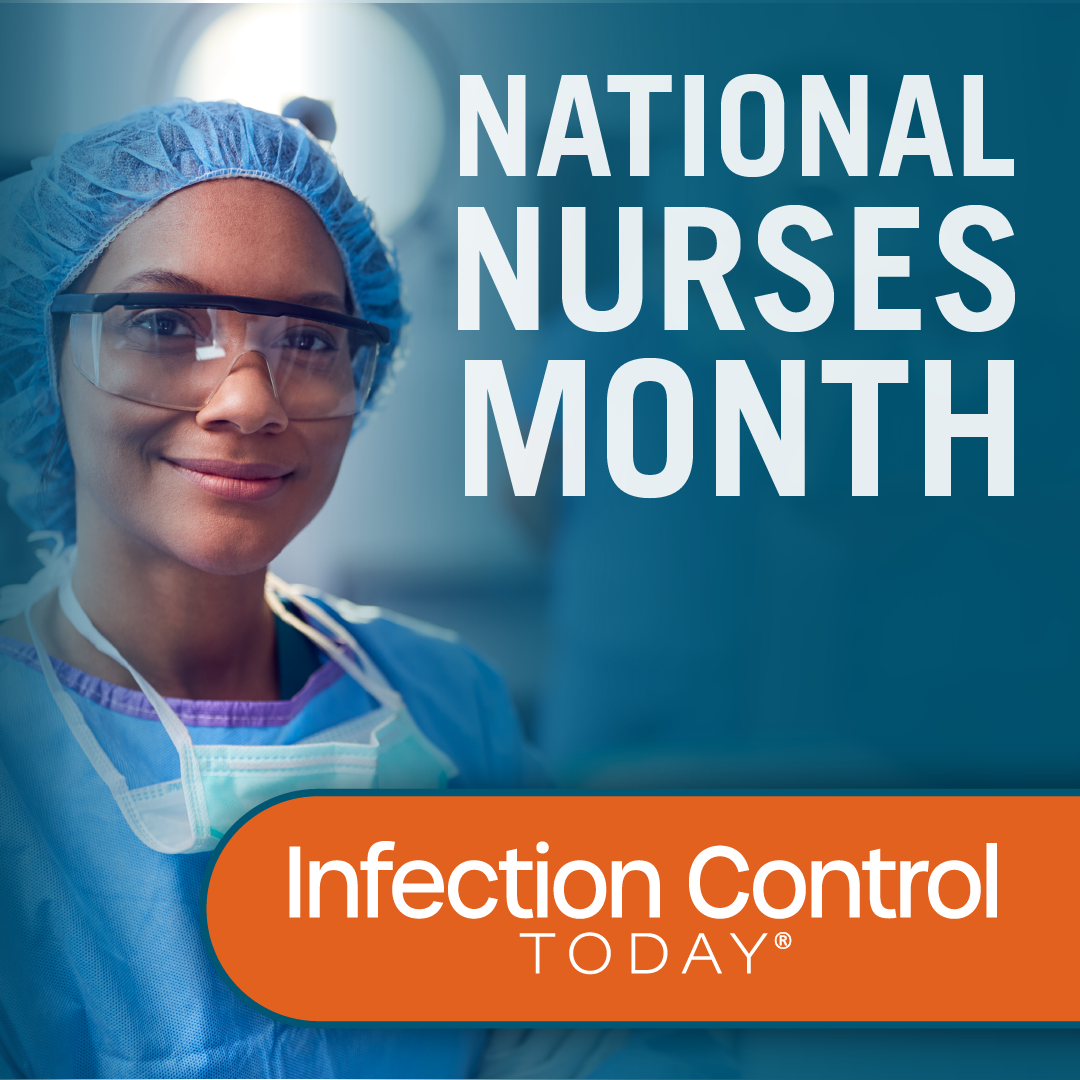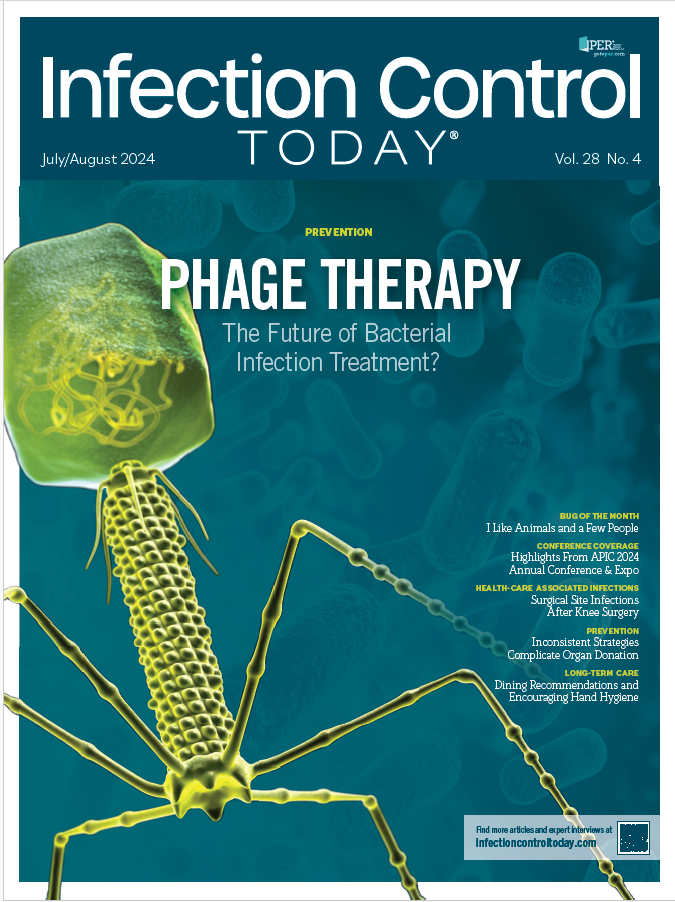The Value of Certification in Infection Prevention and Control: Why Is it important?
Certification in infection prevention and control is essential for career growth, higher salaries, and improved patient outcomes. Learn why certification matters from Shazia Irum, MSC, MBA, RN, CIC, CPHQ, CBIC Ambassador in Saudi Arabia.
Infection Control written on a keyboard button
(Adobe Stock 226251678 by momius)

In a world where competition for jobs, pay increases, and academic success continues to increase, certifications offer hope because they are a credible, third-party assessment of one’s skill and knowledge for a given subject.1,2
Certification in infection prevention and control is a standardized measure of the basic knowledge, skills, and abilities expected of infection prevention and control (IPC) professionals.1 The main purpose of certification is to protect the public by providing a standardized measure of knowledge required for IPC professionals. In addition, it encourages individual growth and study.1-3
The Certification Board of Infection Control and Epidemiology (CBIC) independently sets the standard for infection prevention competency, accrediting the certified in infection control (CIC) credential, recognized as the profession's benchmark.2,6 Using real-world practice data, CBIC ensures alignment with industry standards through ongoing research and testing.2, 7, 8
The importance of certification could be determined by evaluating the relationship between certified infection preventionists (IPs) and the quality of patient care. Certified IPs are well-versed in interpreting evidence and acting as champions for key infection prevention practices within their health care facilities.
Many infection preventionists have a nursing degree, but it isn't required.
May is National Nurses' Month!

Additionally, certified IPs may have a stronger understanding than other practitioners of the evidence for certain infection prevention and control activities.3Health care facilities with certified IP leads significantly reduce their health care-associated infections.1,2 Also, performance organizations recognize that credentialed staff is a vital indicator to patients and employers that their professionals are qualified and proficient.1,2,3
The demand for certification is increasing daily in the growing infection prevention and control field.2 For IPC professionals, obtaining certification is instrumental in their professional growth and career advancement, such as recognition of expertise, professional development, enhanced job performance, higher salary compensation, and improved patient outcomes.4 There are more opportunities for those with the CIC credential than for those without the credential.3,4
One study found that certified IPs make an average annual salary of $85,911 compared with noncertified IPs, who make an average annual salary of $68,817.5,6 The certification of IPs in health care settings represents the individual’s and their institution’s dedication and commitment to infection prevention and control practices.3,4,6 Additionally, acquiring a CIC increases the marketability of IPs in the job market.3,4,6
Results from one study found that at least 46% of IP job openings in the US required a CIC. State legislation in many states now requires certified IPs in hospitals and long-term care facilities, increasing a certified IP's marketability. In 2007, Goldrick reported that 30% of employers required the CIC credential to apply for or maintain employment.4 That number raised to 46% in 2018.4
Currently, CBIC offers 3 different levels and varieties of certification: CIC, a-IPC, and LTC-CIP.8
- CIC: The most popular and significant certification in infection control, with certain eligibility criteria of educational background and experience to be combatted before applying for the examination. Additionally, the individual must be directly responsible for implementing infection prevention activities in their facilities, which are based on exam content outline and competencies to be covered, such as 1: Identification of Infectious Disease Processes, 2. Surveillance and Epidemiologic Investigation, 3. Preventing and controlling the transmission of infectious agents, 4. Environment of care, 5.Cleaning, disinfection, sterilization, asepsis, and at least 2 of the remaining 3 components: 6. Employee/Occupational Health, 7.Management and Communication, 8. Education and Research.
- a-IPC: This is a basic and entry-level certification that does not necessarily require specific job experience in infection prevention and control. It is specifically designed for those who want to gain knowledge and expertise in the IPC field and embrace infection control as a career path.
- LTC-CIP: This certification is offered particularly to those working in long-term care facilities.
The trend of obtaining infection control certification has increased in recent years, especially in Middle Eastern countries like Saudi Arabia, which is at the top in having certified IPs working among others outside North America. A survey analysis conducted by the CIC Academy (virtual study group) in Saudi Arabia showed that more than 20% of the respondents shared that certification was compulsory for them to get a job in a reputable organization. However, more leadership support is needed to strengthen the collaboration between ministries and organizations to support and acknowledge their professionals to pursue certification and to be accredited for their skills.
As an IP, my beliefs and experience clearly show that certification offers several benefits at the personal and facility levels. After my CIC, I gained so much confidence in making the right evidence-based decisions for the safety of my patients, staff, and others in my facility. I found that certification is the best opportunity to validate professional skills and expertise.
To explain the career path of an IP, APIC has announced its new Infection Preventionist Career Development & Advancement Guide.
To ensure the safety of patients and staff in health care settings, it is essential to keep up with the most up-to-date safety and prevention strategies for infection control and the reduction of communicable diseases. Moreover, certification in infection control can help you stand out from the competition by showing your commitment to education and excellence in the field, which is indispensable in today’s competitive job market.6,7
References:
- Certification: The Defining Difference. Association for Professionals in Infection Control and Epidemiology. Accessed on May 9, 2024. https://apic.org/policy-priorities/certification-the-defining-difference/
- Crist KS, Russell BS, Farber, MR. The Value of Certification and CIC Credential. American Journal of Infection Control. 2012;40(4):294-295.
- What is Certification in Infection Control (With Benefits). Indeed. Accessed on May 9, 2024. https://ca.indeed.com/career-advice/career-development/certification-in-infection-control
- Marx JF, Callery S, Boukidjian R. Value of certification in infection prevention and control. American Journal of Infection Control. 2019;47(10):1265-1269.
- Knighton SC, Gilmartin HM, Reese SM. Factors affecting annual compensation and professional development support for infection preventionists: implications for recruitment and retention. Am J Infect Control. 2018;46(8):865-869. doi:10.1016/j.ajic.2018.03.009
- Benefits of Achieving Certifications and Trainings in the field of Infection Prevention and Control. https://www.infectioncontroltoday.com/view/benefits-achieving-certifications-training-field-infection-prevention#
- Reesem SM. The benefits of achieving certifications and training in the field of infection prevention. Infection Control Today. January 20, 2024. Accessed May 9, 2024.
- Guidelines for CIC Certification. Certification Board of Infection Control and Epidemiology, Inc. Accessed May 14, 2024. https://www.cbic.org/CBIC/Candidate-Handbook/Eligibility-Guidelines.htm
